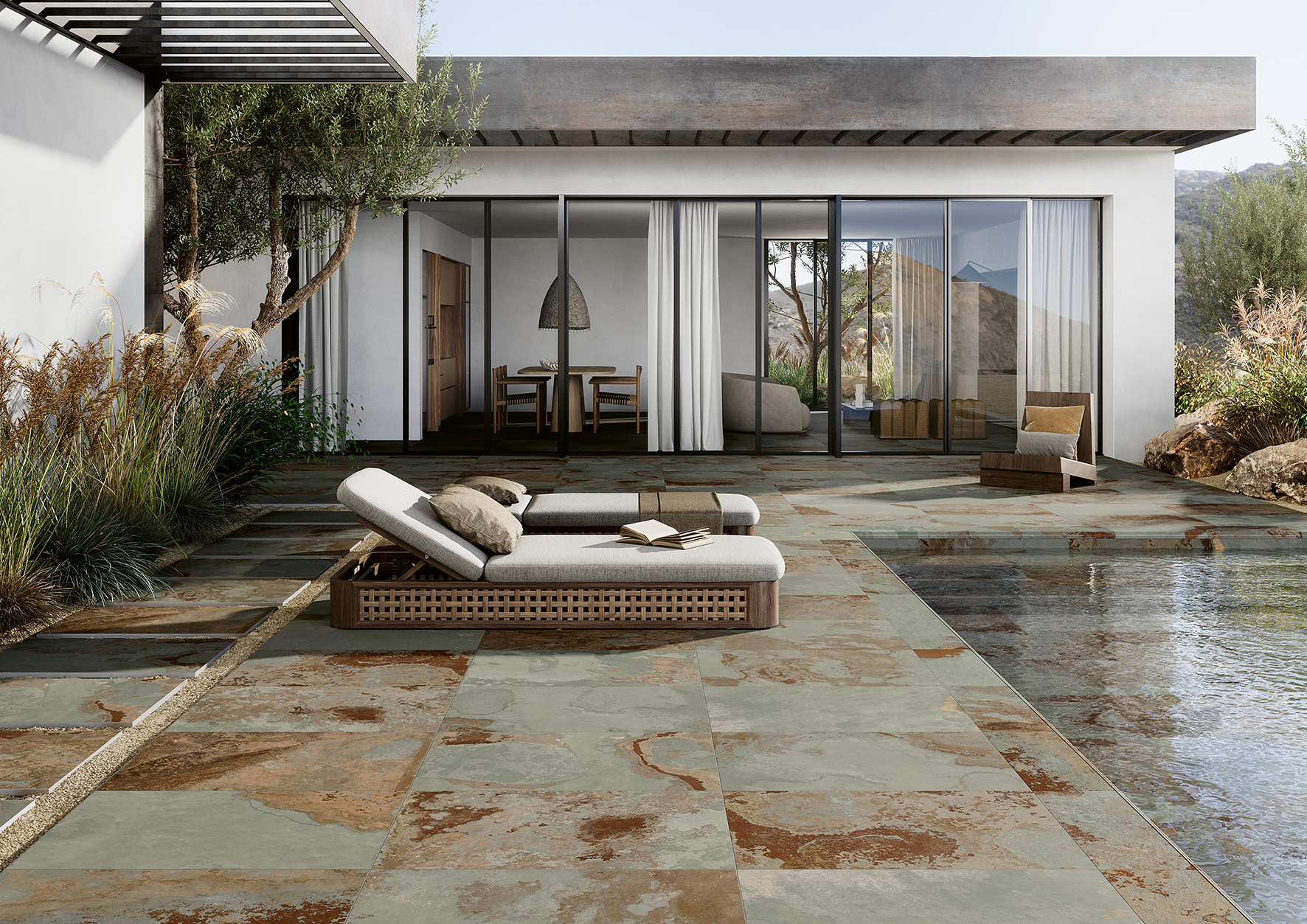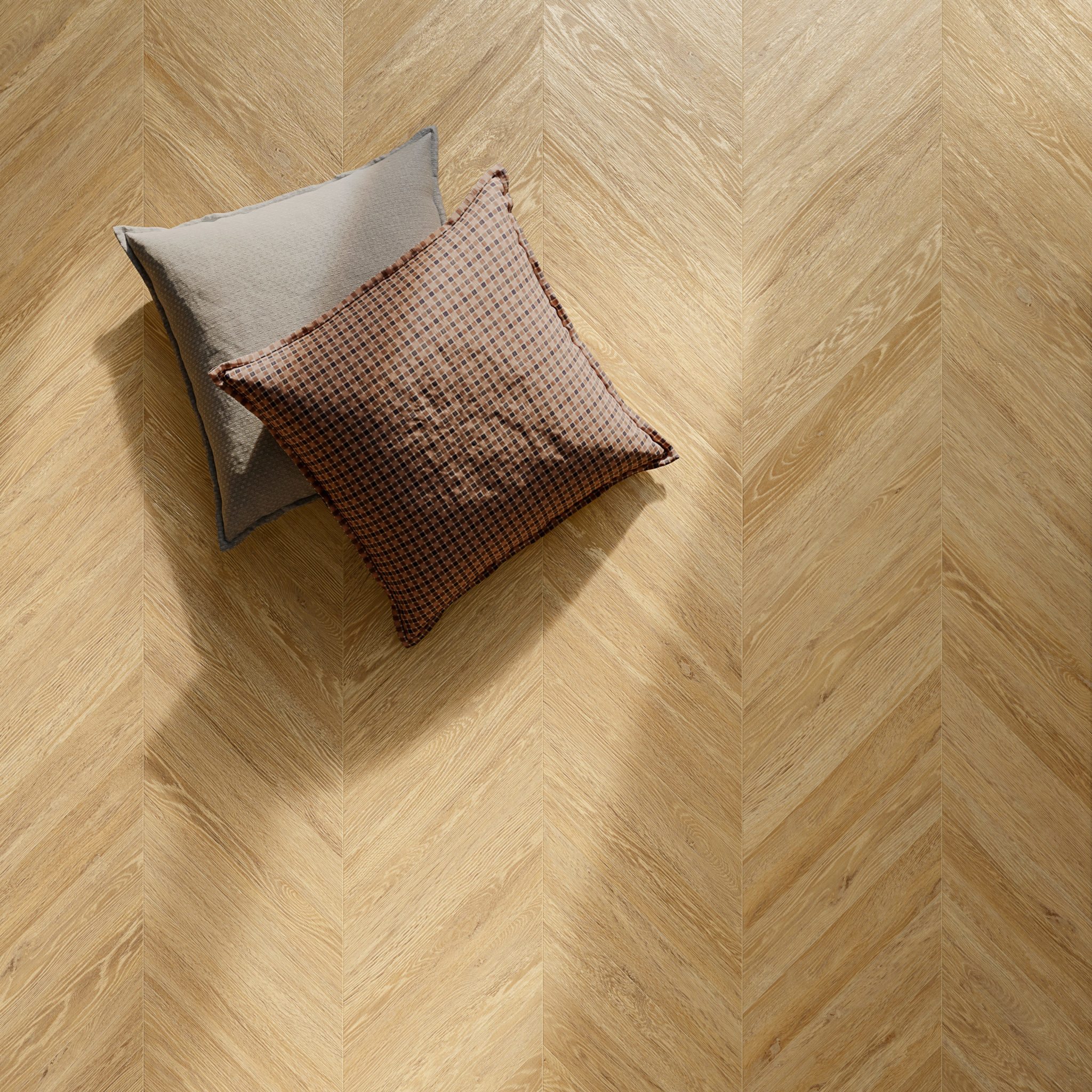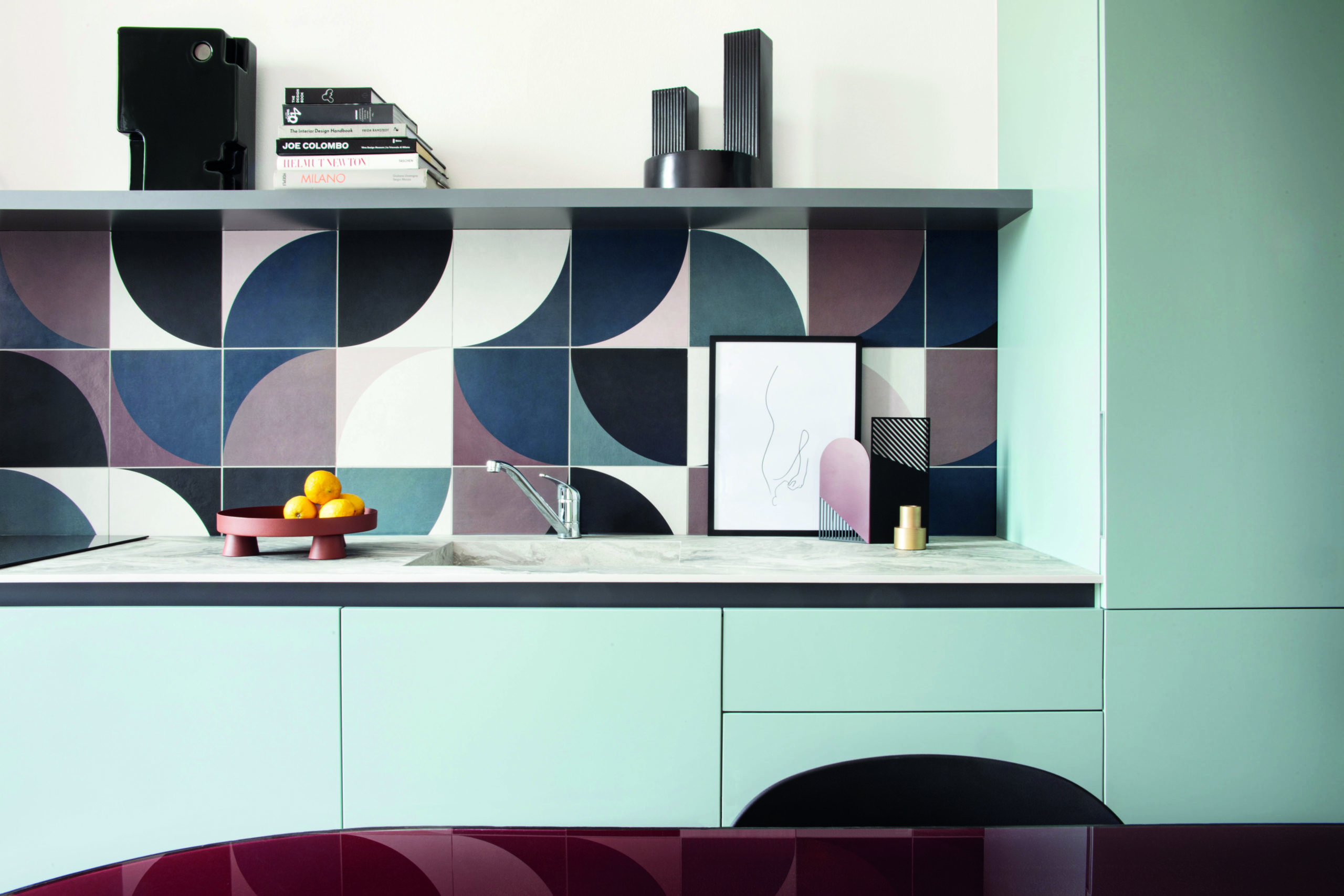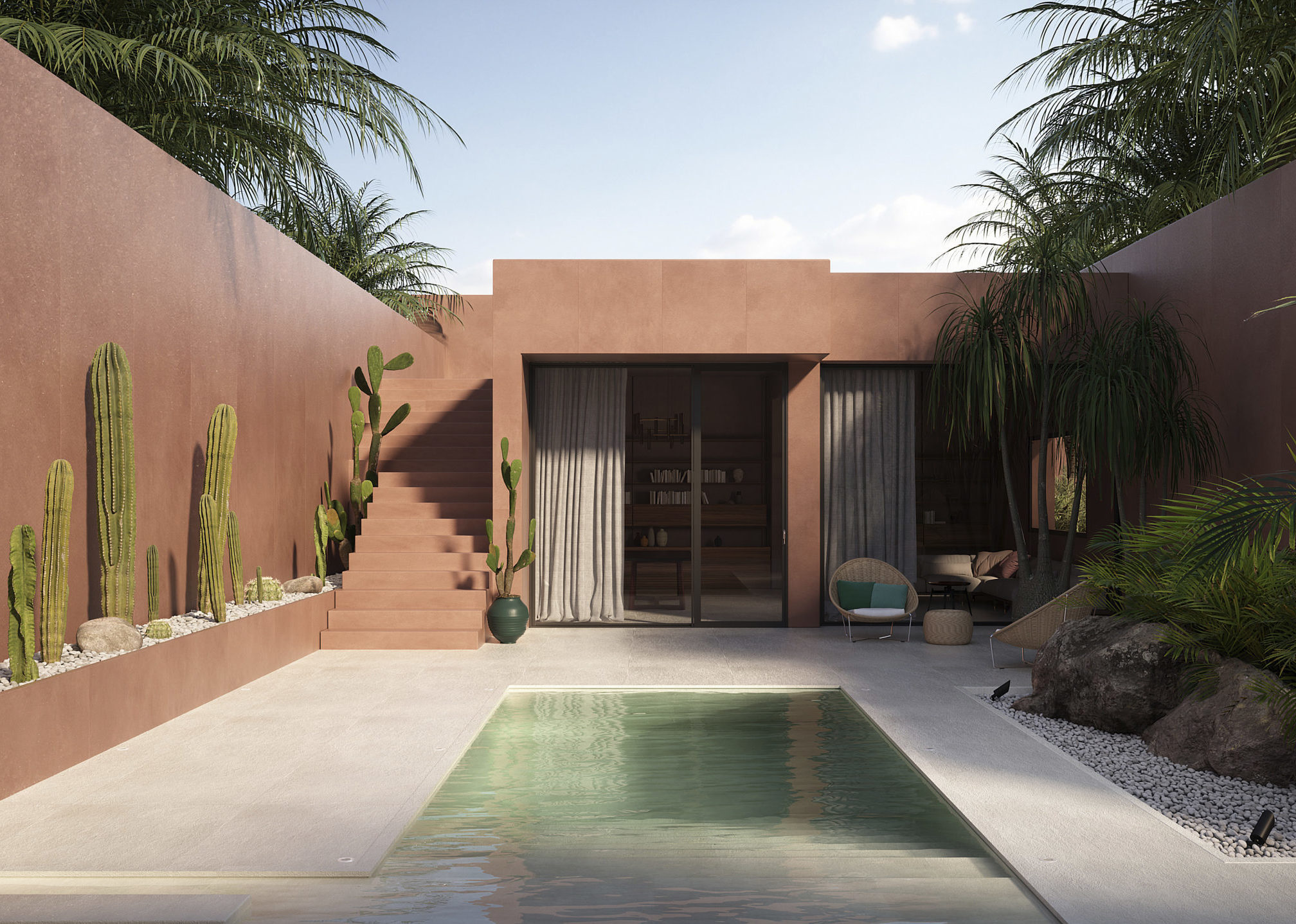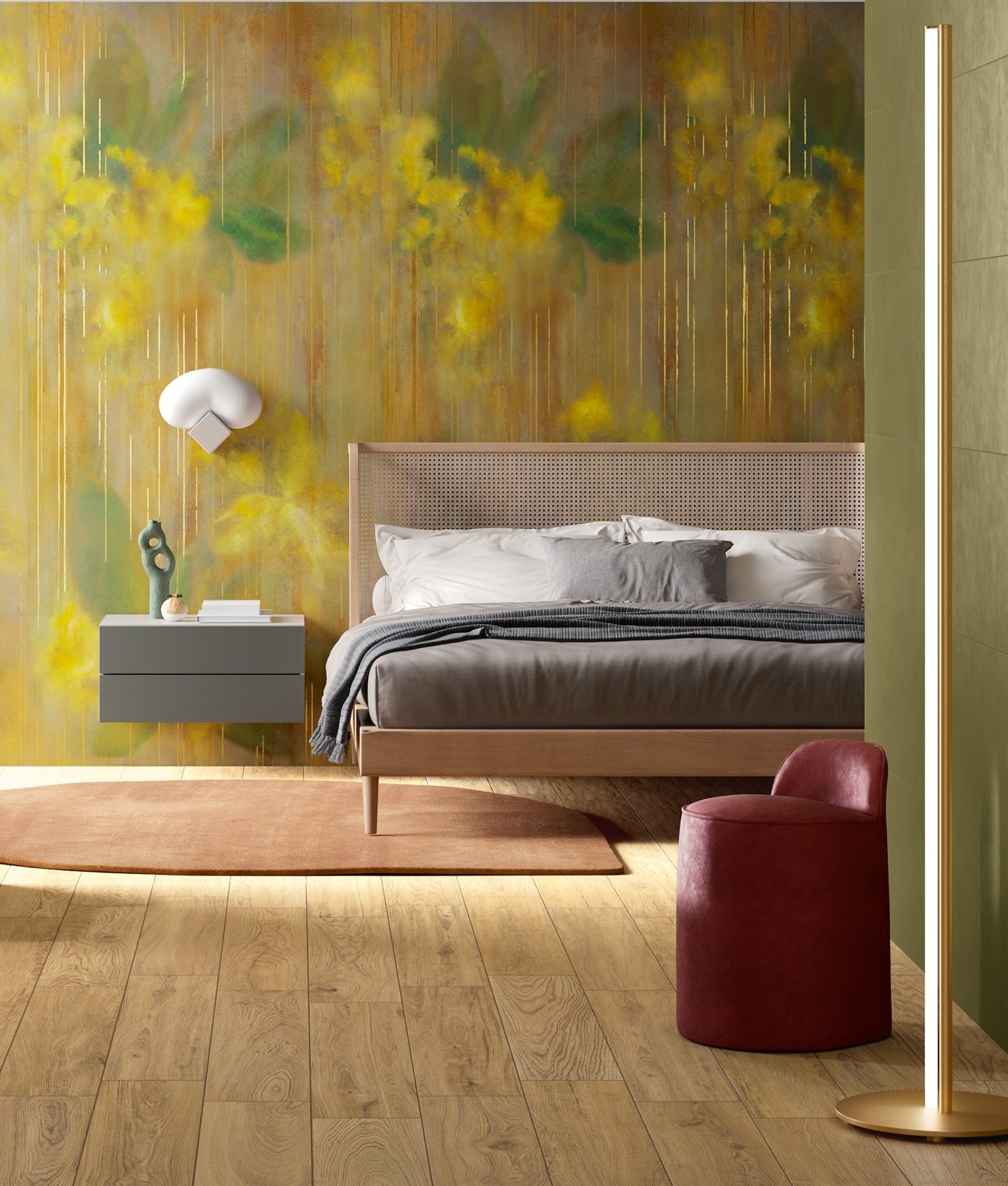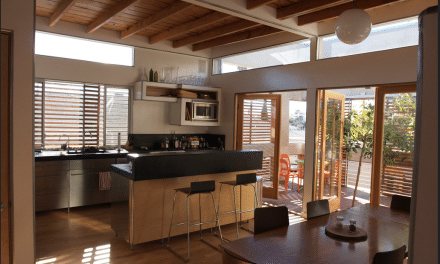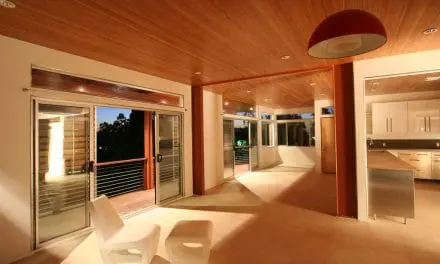Photo Courtesy Atlas Concorde
After years of investment, Italian ceramicists launch sustainable tile campaign
A number of Italian tile designers and fabricators, many of which have been on the eco-track for decades, have joined forces. A sustainable tile campaign launched by Confindustria Ceramica (the Italian Association of Ceramics) reflects an enormous financial commitment—2.2 billion Euros in the last six years—to cut energy requirements and atmospheric emissions.
Inherently and innovatively sustainable
Ceramic tile has a lot to recommend. It’s durable, with a lifespan of more than 50 years. The product is made with natural raw materials, and it has no VOCs. This hypoallergenic and easy-to-clean product category inhibits bacterial growth and is mold and abrasion resistant (no need for harsh chemical detergents). Add to that fire, frost, and thermal shock resistance. Innovative Italian ceramic products will play a key role in sustainable, resilient contemporary architecture.
The “Italian ceramics, A sustainable choice” initiative focuses on the entire supply chain: from the extraction of raw material through to production, packaging, distribution, use and disposal:
- Avoiding raw materials extraction in protected areas to preserve biodiversity
- Increasing use of energy produced by cogeneration and photovoltaics
- Eliminating dust emissions
- Minimizing process emissions as tiles are fired
- Replacing raw materials with recycled materials
- Reusing production and purification waste, including water
- Occupational health and safety throughout the supply chain are key to corporate social responsibility (includes child labor and silica exposure)
- Packaging with compostable and/or recycled materials
- The extensive use of rail transport for raw materials and finished product to minimize CO2 emissions
Let’s shop for sustainable tile from Italy
Ceramiche Coem
Combining sustainability with technical performance and visual appeal has been a long-time company goal. With its first Sustainability Report in 2021, produced in accordance with the GRI (Global Reporting Initiative) sustainability reporting standards, the company has an eye on reducing its impact on the environment and integrating sustainability into the daily decision-making process.
Ceramica Sant’Agostino
A program called Ecoquality coordinates the company’s efforts to achieve high quality while respecting strict European and international rules to protect the environment and end-users. The brand built a cutting-edge photovoltaic system to autonomously produce electricity. With a production of 1.1 million kWh/year, that translates to 507 tons of CO2 not released into the atmosphere annually.
Ceramica Sant’Agostino also uses a rainwater recovery system that offers more than 10% savings on mains water consumption. Rather than discharge processing water into the surrounding environment, it is completely recycled and reused in production processes.
Gruppo Bardelli
All ceramic waste in the production process at its factories (brands Ceramica Bardelli, Ceramica Vogue, and Appiani) is used and up to 100% of production wastewater is recycled. In addition, all brand packaging is made from natural recyclable materials, encouraging the entire supply chain to adopt sustainable waste disposal. Bardelli’s sustainable tile products are labeled GREENGUARD Gold, a low-VOC certification for healthier indoor air quality.
Laminam
A leader in the production of ultra-thin ceramic surfaces in large formats, the brand continues to push the envelope in design with new textures, innovative methods, and highly automated technologies: digital decoration systems, dry cutting systems, and internal logistics managed by automatic laser-guided vehicles. Depending on the type, Laminam surfaces contain 20% to 40% pre-consumer recycled material.
Naxos
Part of the Fincibec Group, Naxos has for years had a corporate environmental policy. All products are manufactured using raw materials with low environmental impact, minimizing consumption of natural resources such as water and methane. Electricity is self-produced through a cogeneration system, which dramatically reduces CO2 emissions. All wastes are reused in the production cycle, and all refuse from nonproduction activities are carefully collected, sorted, recycled, and disposed of. Every phase of product creation (raw material extraction, glaze preparation, glazing, firing, sorting, and packaging) takes place “with the utmost respect for man and the environment, through an analysis of the entire product life cycle.”
Panaria Group
The brand likes to think big: its goal of 360-degree sustainability features a production cycle with increasingly less waste as well as less paper and plastic in packaging. Its ultra-slim ceramic slabs use less water and less raw materials, cutting CO2 emissions down to zero because they offset 100% of what they emit.
Our team researches products, companies, studies, and techniques to bring the best of green building to you. Elemental Green does not independently verify the accuracy of all claims regarding featured products, manufacturers, or linked articles. Additionally, product and brand mentions on Elemental Green do not imply endorsement or sponsorship unless specified otherwise.



